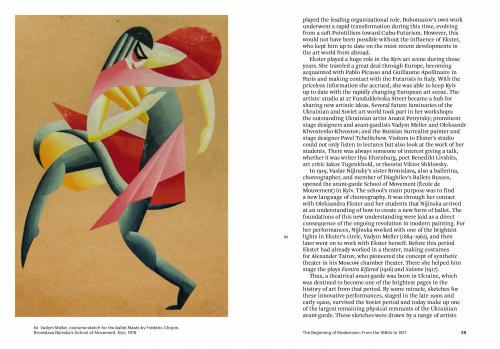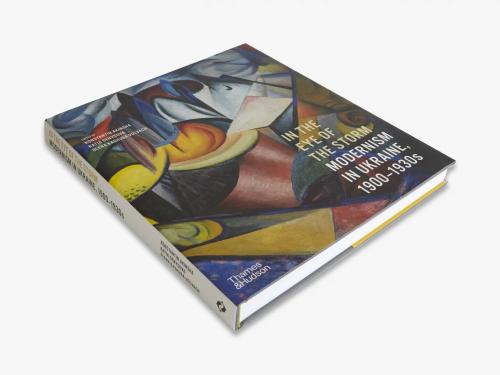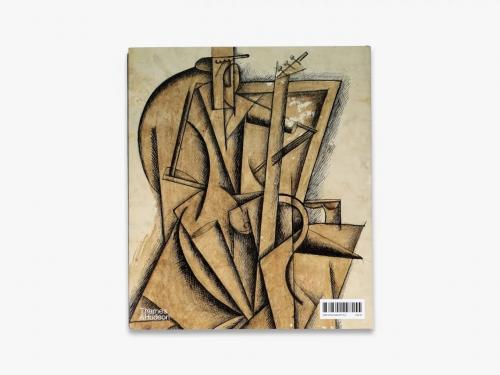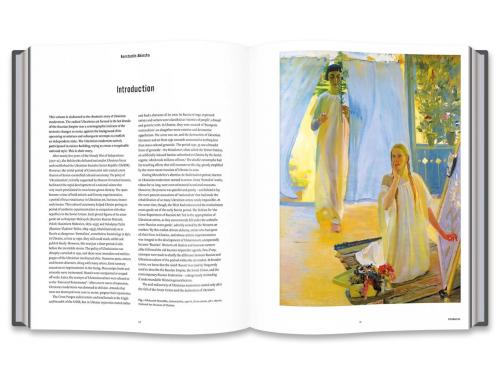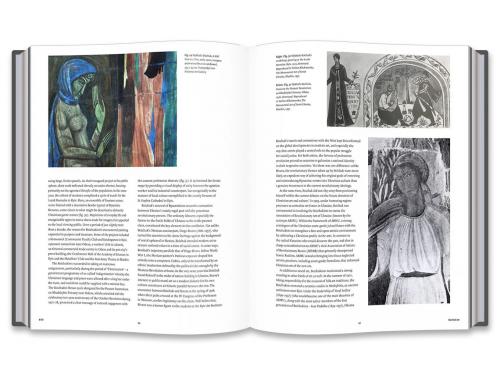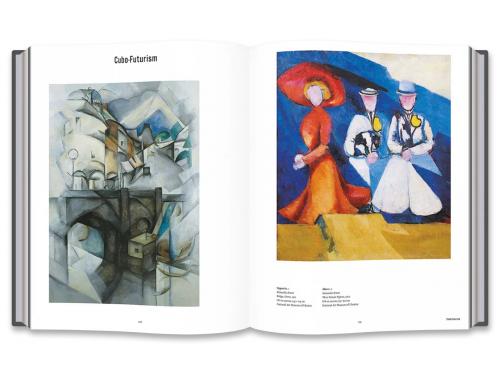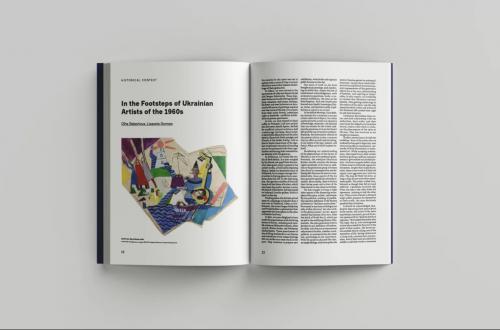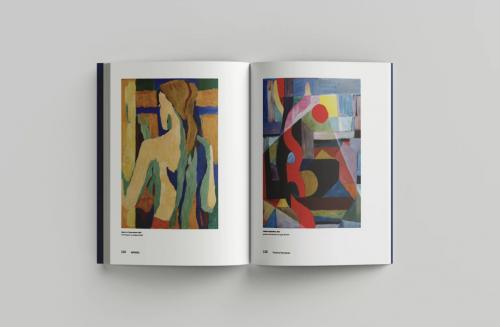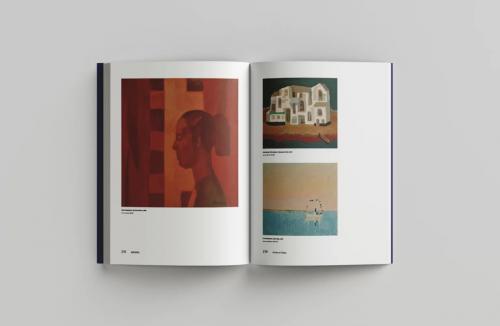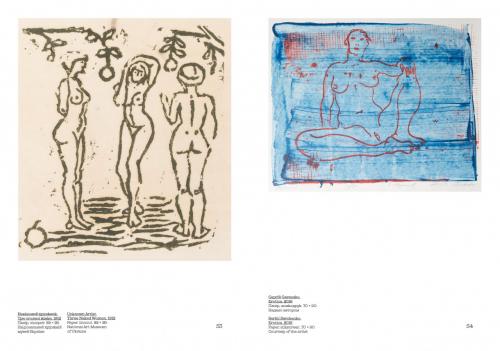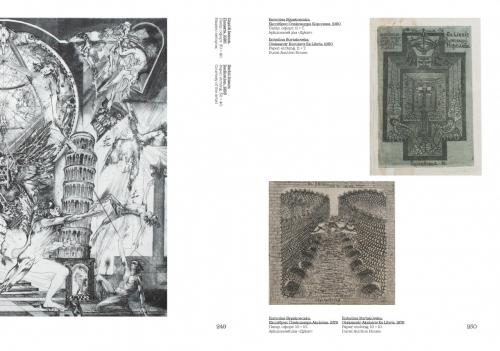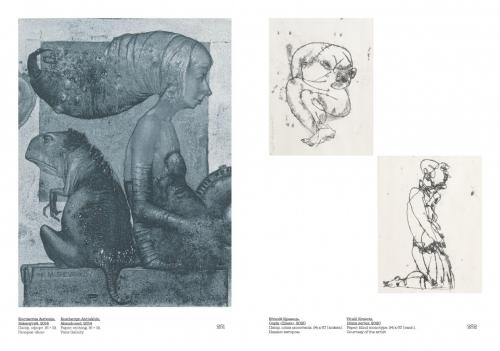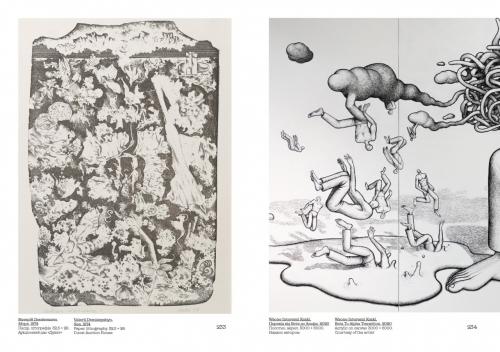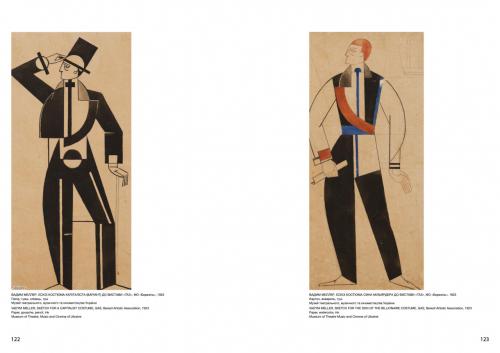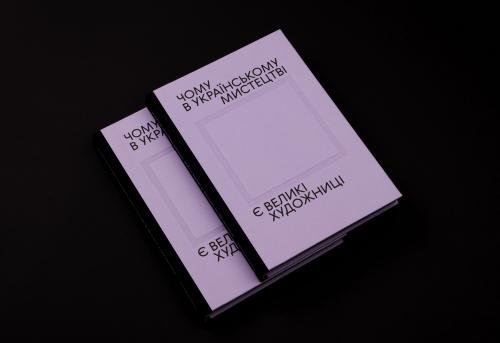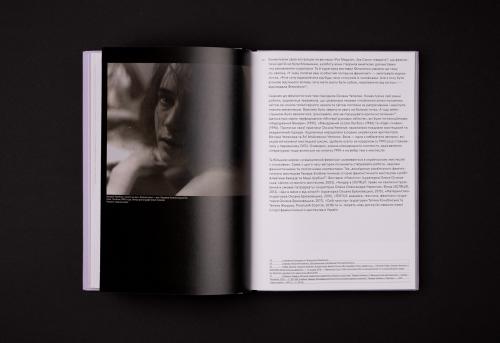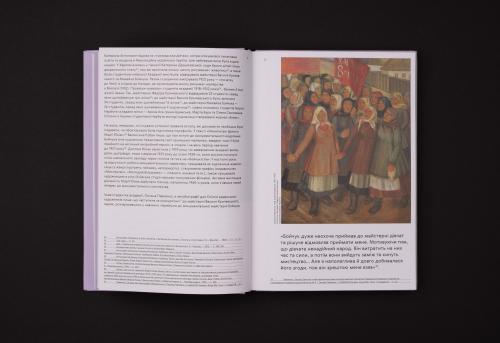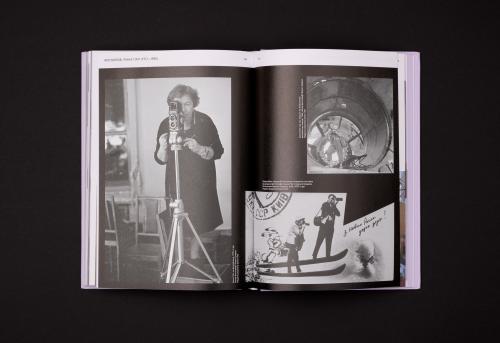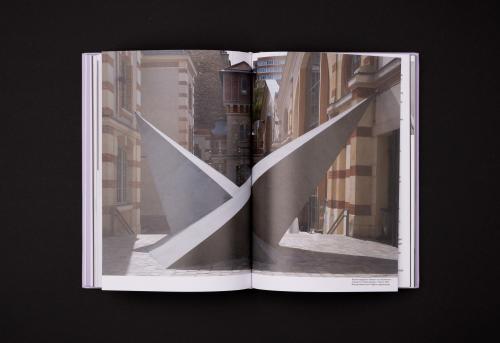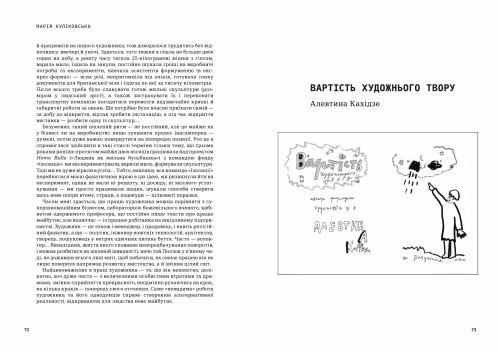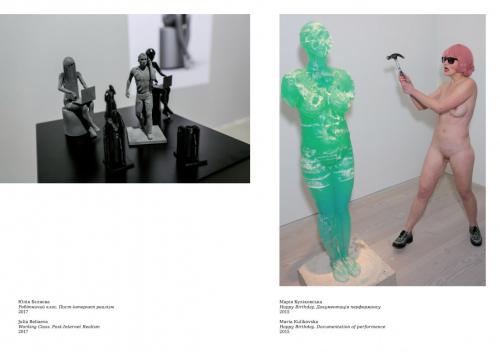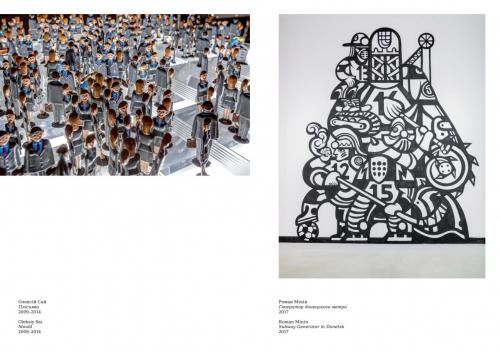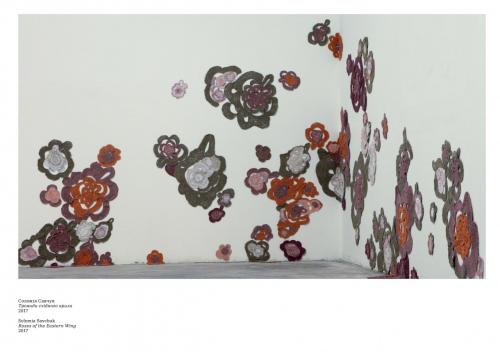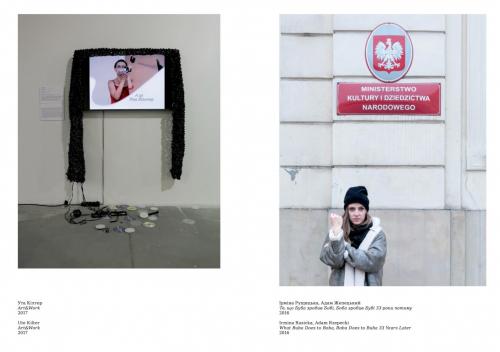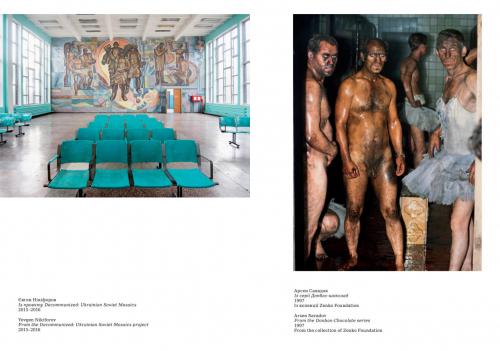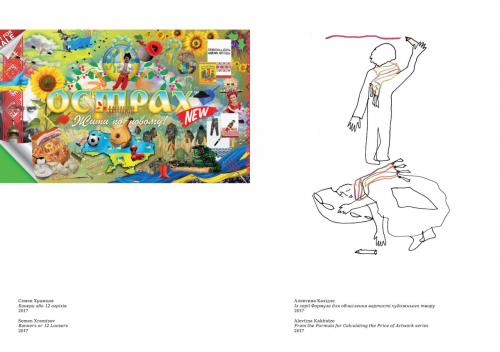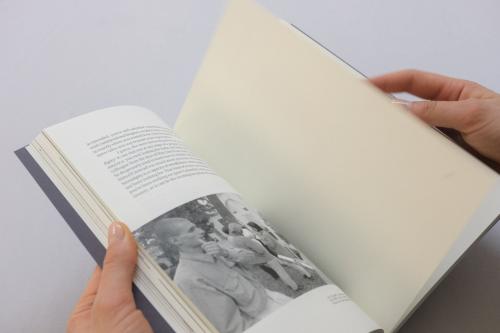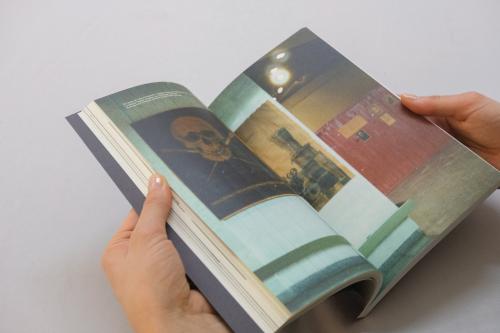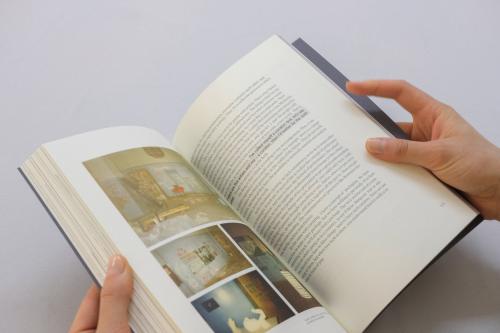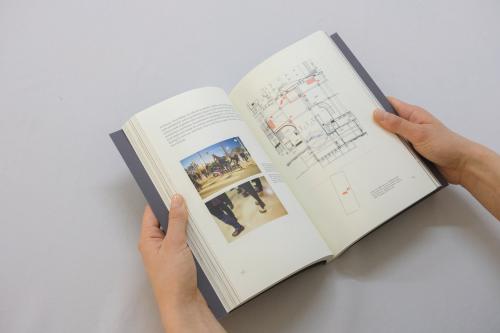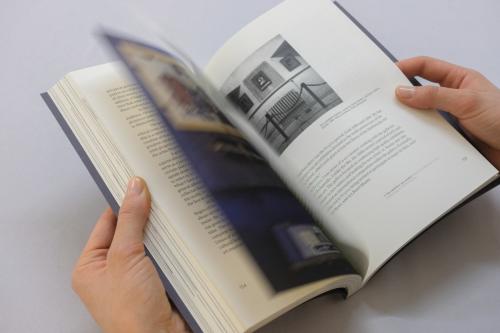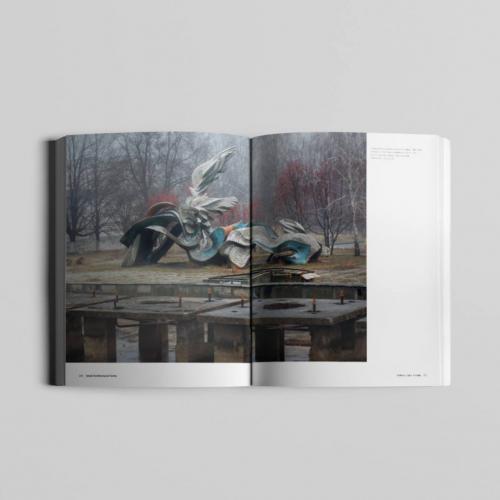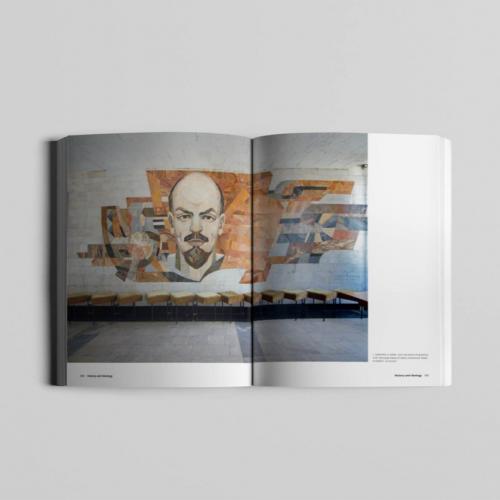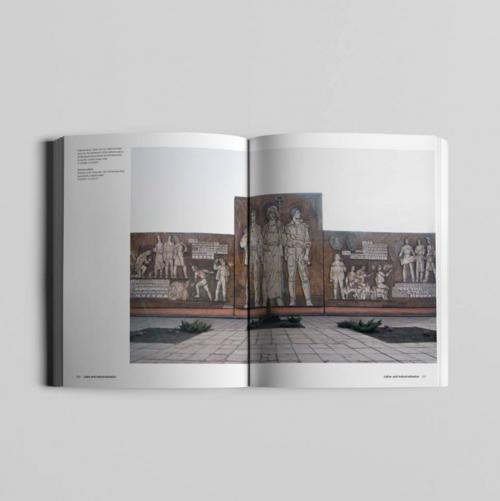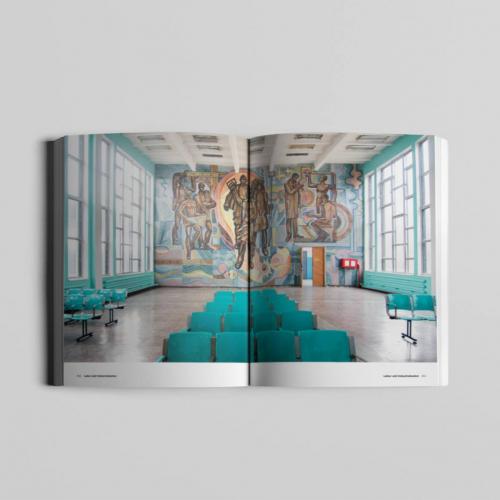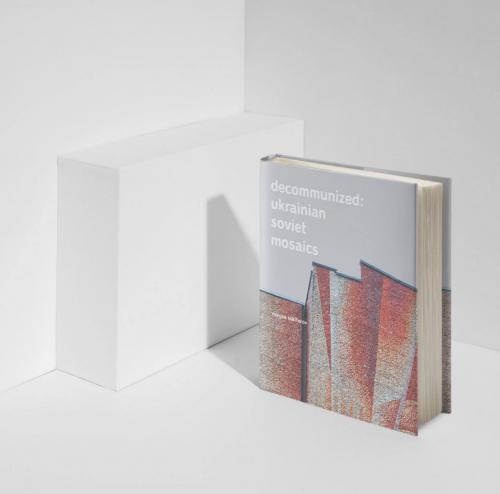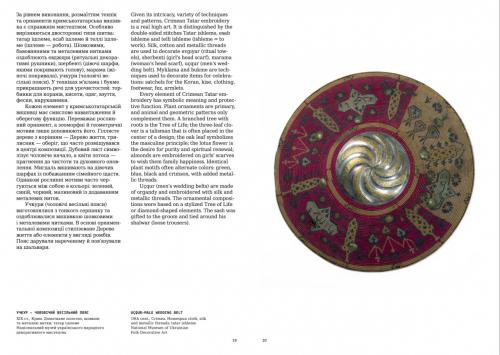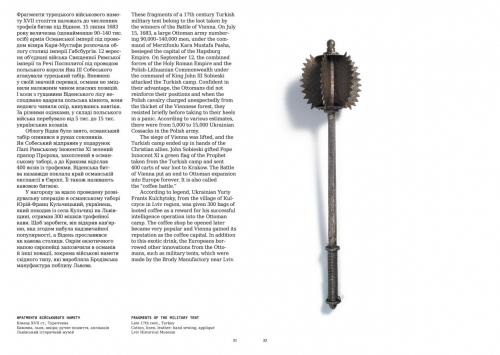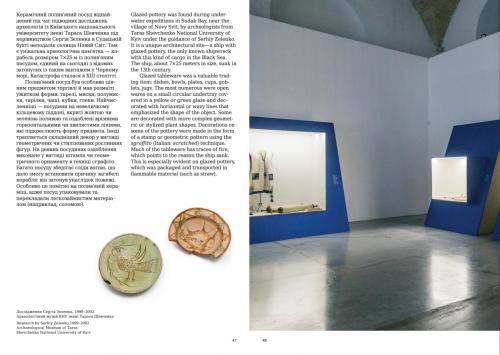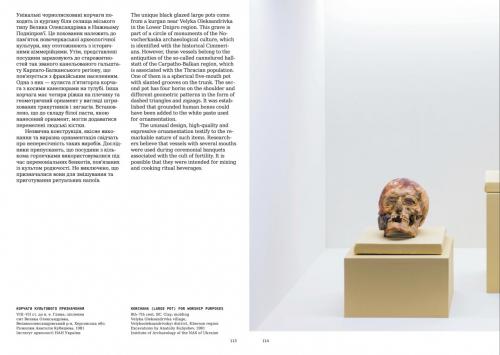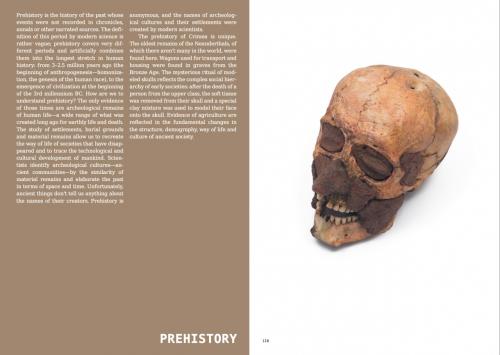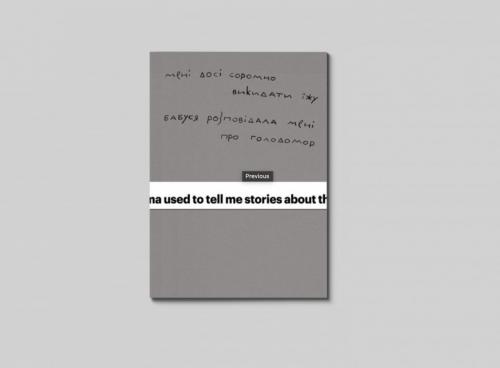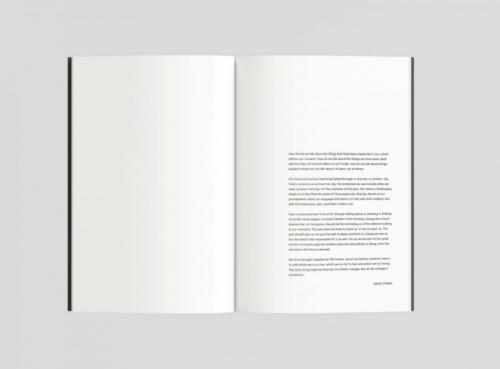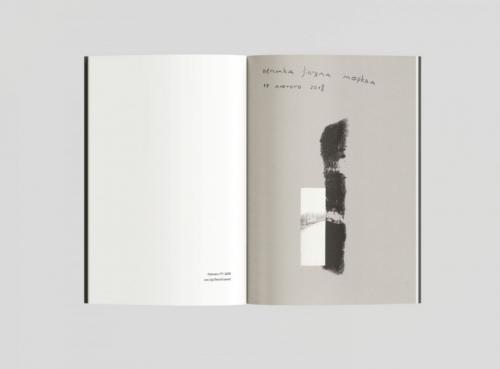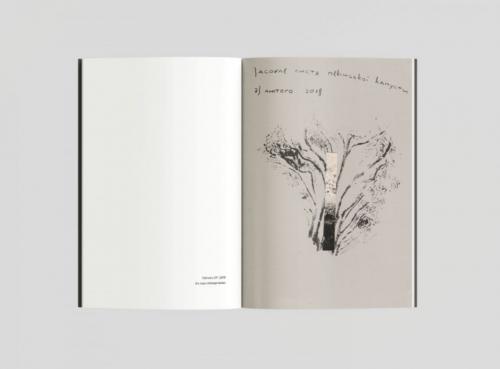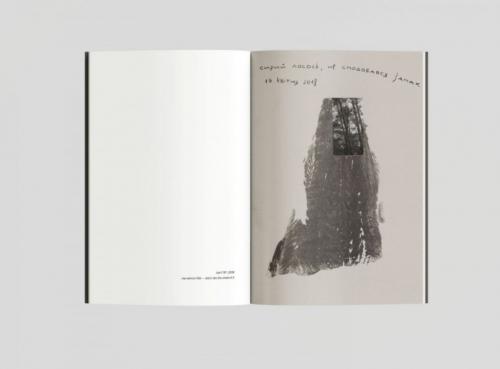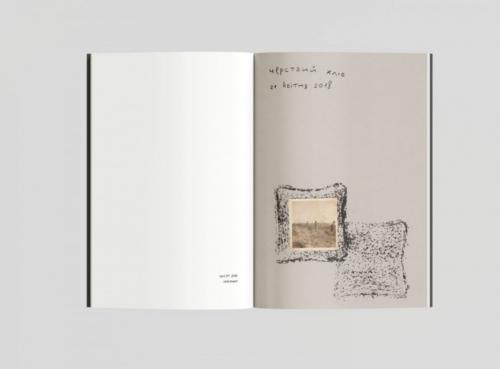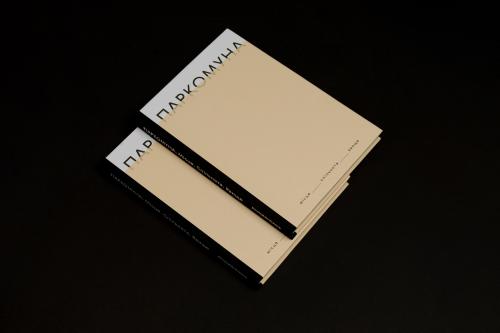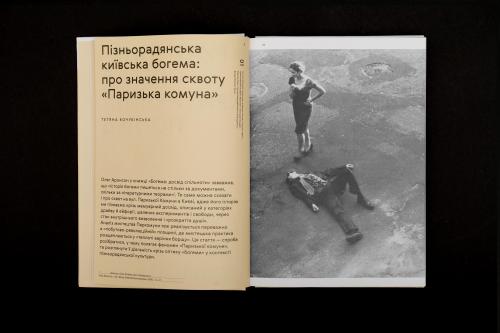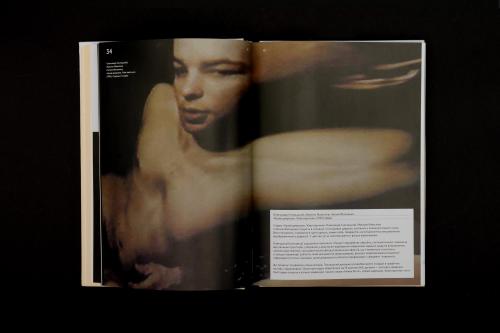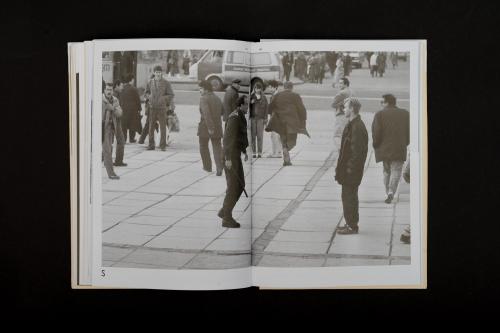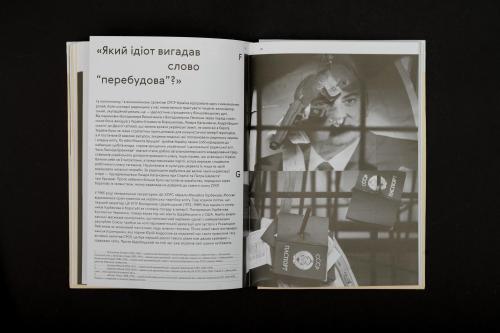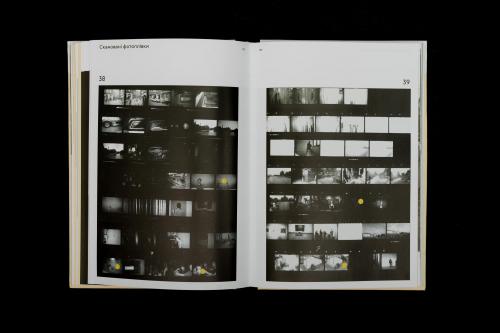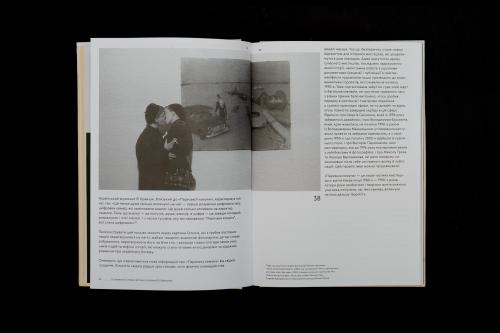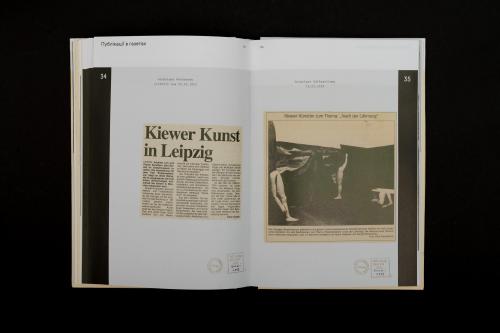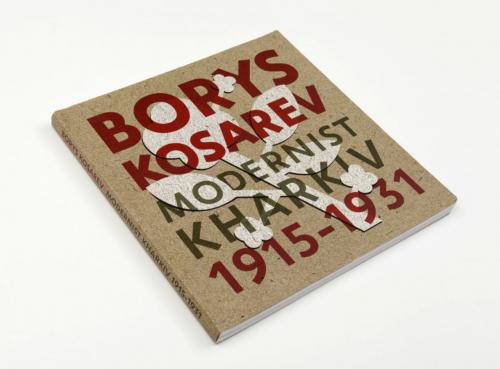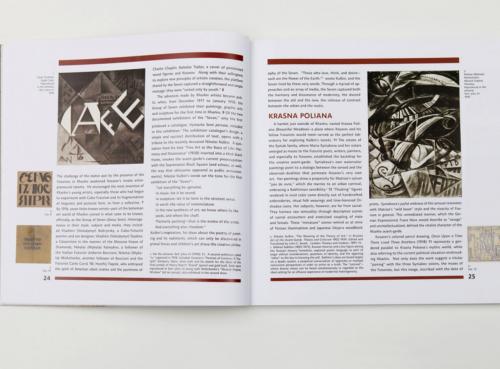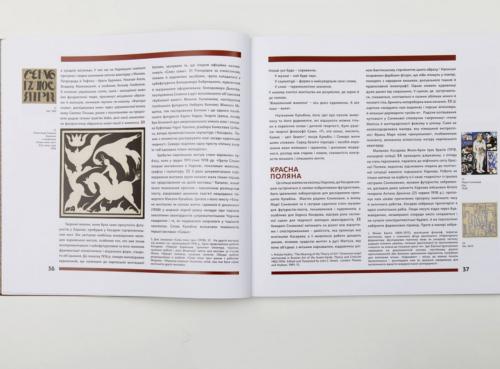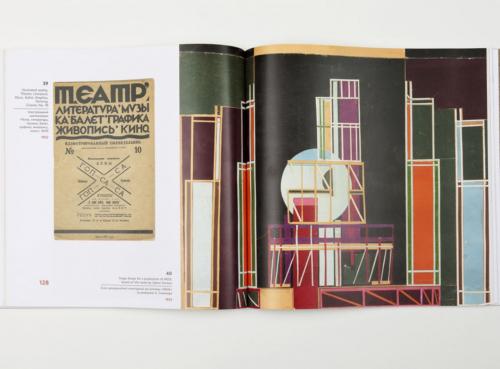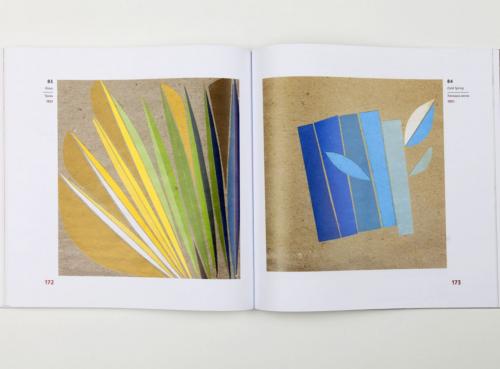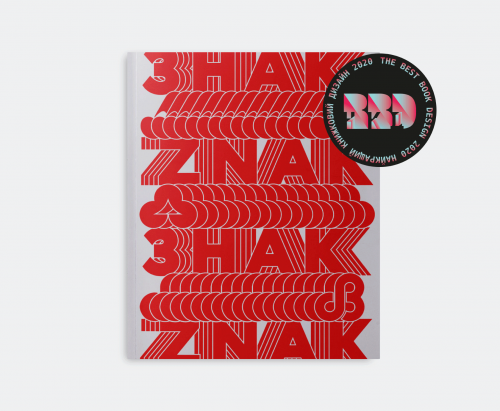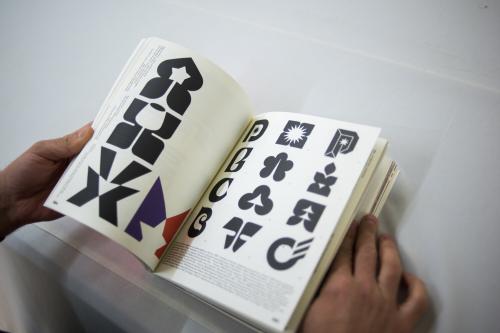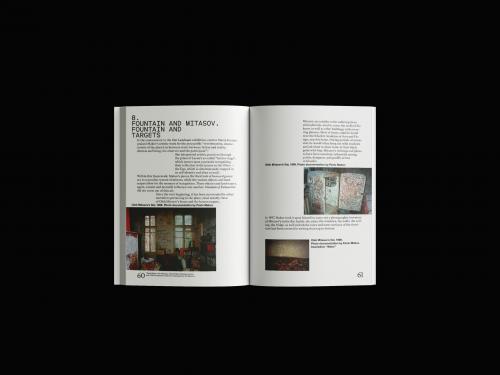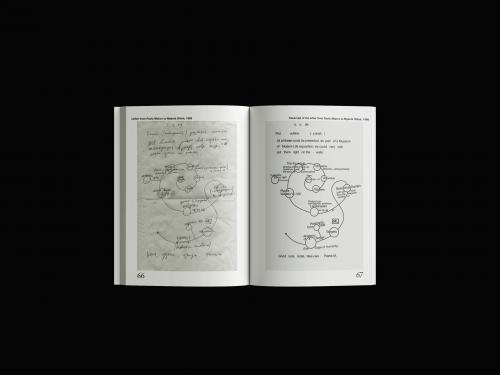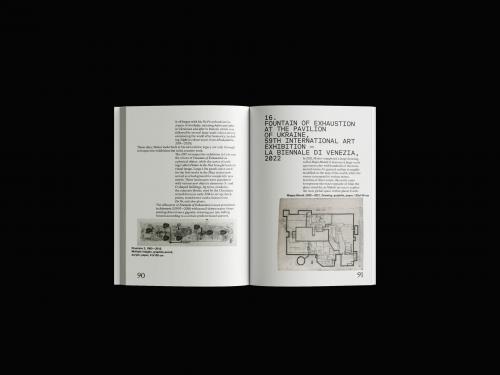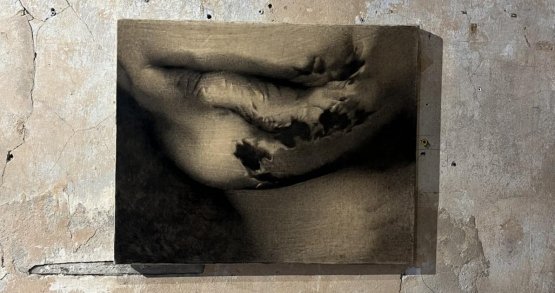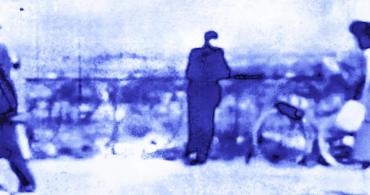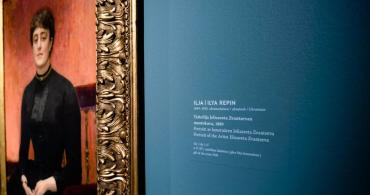This terrible fact has made our country more visible on the international stage, and the reissue of Lozhkina's book has become one of the ways to engage international audiences in Ukraine's cultural context. We have compiled a list of other English-language books on Ukrainian art that are worth reading and sharing.
In the Eye of the Storm: Modernism in Ukraine, 1900–1930s
Authors: Konstantin Akinsha, Katia Denysova, Olena Kashuba-Volvach
Publisher: Thames & Hudson, 2022
The publication explores avant-garde art in Ukraine at the beginning of the 20th century, from 1900 to 1930. Radical political changes in the country seem to have only fueled experiments in various art spheres. “In the Eye of the Storm” shows the development of Ukrainian avant-garde through three cities — Kyiv, Kharkiv, and Odesa — and renowned artists such as Oleksandra Ekster and David Burliuk, Sonia Delaunay and Oleskandr Arkhypenko, Vasyl Ermilov and Oleksandr Bogomazov, among others.
In 2023, based on the book's theme, an exhibition of the same name opened at the Royal Museums of Fine Arts in Brussels. We have previously written more details about it.
The Art of Ukrainian Sixties
Authors: Lizaveta German, Olga Balashova
Publisher: Osnovy Publishing, Kyiv, 2020
The book consists of texts about 15 Ukrainian-Soviet artists who were creators of unofficial art in the USSR during the 1960s in Kyiv, Lviv, Uzhgorod, and Odesa. The authors examine not only underground art but also officially permitted art practices, such as graphics, monumental art, and sculpture, where formal experiments also took place. 26 experts who worked on “The Art of Ukrainian Sixties” made this publication not only a historical overview of an important period in Ukrainian art but also a reflection of the state of contemporary art history in Ukraine.
Imprint. Ukrainian Printmaking of the XX–XXI Centuries
Authors: Olesia Avramenko, Iryna Borovets, Olga Lagutenko, Polina Limina, Yulia Vahanova, Kateryna Pidhaina, Oleg Sydor-Hybelynda
Publisher: Mystetskyi Arsenal, Kyiv, 2020
“Imprint” presents the phenomenon of Ukrainian printmaking over the last 100 years and its main centers — Kyiv, Odesa, Kharkiv, and Lviv. The publication is a summary of the eponymous exhibition at the Mystetskyi Arsenal in 2020, which brought together prints from nearly two dozen collections. It showcased a wide range of historical trends and styles — from emigrant engravings at the beginning of the XX century through the preservation of traditions during the Iron Curtain era to the independence of Ukraine, when print art became part of the world’s contemporary art scene.
Kurbas: New Worlds
Authors: Virlyana Tkach, Yaryna Tsymbal, Tetiana Rudenko, Olesia Ostrovska-Liuta
Publisher: Mystetskyi Arsenal, 2019
“Kurbas: New Worlds” provides detailed insight into the life and work of Les Kurbas, a Ukrainian theatrical avant-gardist of the early XX century. His contribution to Ukrainian art history is invaluable. The book presents his work through two periods — experimental (in Kyiv from 1922 to 1926, in collaboration with the “Berezil” artistic group) and late (in the Kharkiv State Theater “Berezil” from 1926 to 1933). The publication was made possible by the eponymous exhibition at the Mystetskyi Arsenal, with most of the exhibition materials provided by the Museum of Theater, Music, and Cinema of Ukraine.
Why There Are Great Women Artists in Ukrainian Art
Authors: Kateryna Iakovlenko, Lidia Apollonova, Kateryna Badyanova, Lizaveta German, Halyna Gleba, Olena Godenko, Tetiana Kochubynska, Kateryna Mishchenko, Vlada Ralko, Valeriya Shiller, Tetiana Zhmurko
Publisher: Publish Pro, Kyiv, 2019
The publication is one of the first attempts to view Ukrainian art through the prism of sex/gender. The book covers key and lesser-known names of female artists from the late XIX to the early XXI century. From it, you can learn about forgotten aspects of the biographies of such artists as Kateryna Bilokur and Maria Prymachenko, Yulia Ukader and Tetyana Yablonska, Alla Horska, and others. Female artists of the XXI century are represented by Anna Zvyagintseva, Ksenia Hnylytska, Zhanna Kadyrova, Lada Nakonechna, Lesia Khomenko, and others. “Why There Are Great Women Artists in Ukrainian Art” shows the evolution of opportunities for female creative realization over more than a century and reflects on typically female issues in art — overcoming career obstacles, awareness of bodily experience in creativity, and more.
Art Work. Texts
Authors: Asia Bazdyrieva, Kateryna Botanova, Anton Drobovych, Tamara Zlobina, Alevtyna Kakhidze, Maria Kulikovska, Alisa Lozhkina, Ewa Sułek, Iryna Stasyuk, Igor Petrashevsky
Publisher: Mystetskyi Arsenal, Kyiv, 2018
Published in 2018 on the occasion of the eponymous exhibition at the Mystetskyi Arsenal and the Galeria Miejska of Wroclaw, the book focuses on understanding trends in artistic work. Ukrainian and Polish artists reflect on the precarious nature of their work and the ambiguous relationships with the art market, against the backdrop of the early development of artificial intelligence, which is commonly believed to be taking away jobs through process automation. “Art Work. Texts” argues that in the XXI century, the world is going through a path similar to that of artists in the XX century — a transition from material to immaterial labor. As we already know, as a result of this process, the work of artists has not disappeared but has only transformed into a new form. The authors of the book write about this and more.
Where Curating Is: The Artist-as-Curator and the Curator-as-Artist in Ukraine from the 1980s to the 2010s
Authors: Kateryna Nosko, Valeriya Lukyanets
Publisher: ist publishing, Kyiv, 2018
This is a collection of essays and interviews about curating in the Ukrainian context. The book examines this phenomenon comprehensively, combining two perspectives — the artist-as-curator and the curator-as-artist. “Where Curating Is” is the result of discussions between the book's compilers and curators and artists. Such as The Open Group, The Masoch Fund, Yuri Leiderman, Arsen Savadov, Lesya Zayats, Mykola Ridnyi, Nikita Kadan, and others. Their sometimes opposing views have formed a complex picture of what curating is now. One of the key sharp questions in the publication is the ethical interaction of curators with artists.
Decommunized: Ukrainian Soviet Mosaics
Authors: Yevhen Nikiforov, Olga Balashova
Publisher: Osnovy Publishing (Kyiv), DOM Publishers (Berlin), 2017
The book “Decommunized: Ukrainian Soviet Mosaics” is the first in-depth study of Ukrainian monumental mosaics from the Soviet period. Many of them were lost during the decommunization process introduced in 2015, during the presidency of Petro Poroshenko. For three years, photographer Yevhen Nikiforov carefully documented this process, which formed the basis of the publication. He visited 109 cities in Ukraine (including Crimea, Donetsk, and Luhansk regions), where he documented over 1000 mosaics. The book includes about 200 of them. Despite these monumental panels being part of Soviet propaganda, the organizers emphasize that the authors attempted to visually disrupt the canon of Socialist Realism through authentic visual language.
Amazing Stories of Crimea
Authors: Alim Aliev, Yulia Vaganova, Viktoriia Velychko, Oleksa Haivoronskyi, Olha Melnyk, Anna Oryshchenko, Olena Onohda, Olesia Ostrovska-Liuta, Anna Pohribna, Svitlana Tsurkan
Publisher: Mystetskyi Arsenal, 2019
The book is the result of an exhibition at the Mystetskyi Arsenal. Its main challenge was to create an exhibition about Crimea without Crimean artifacts that remained on the annexed peninsula. However, archaeological materials reflecting the history of culture in Crimea were collected from various museums in Ukraine. In “Amazing Stories of Crimea,” they are divided into epochs — from prehistoric history and the Cimmerians to the Turks and modern Crimean Tatars.
I Still Feel Sorry When I Throw Away Food. Grandma Used to Tell Me Stories About Holodomor
Authors: Andrii Dostliev, Lia Dostlieva, Serhiy Zhadan
Publisher: Rodovid, Kyiv, 2019
The book, part of Andrii and Lia Dostliev's project, focuses on the guilt of throwing away food associated with the Holodomor. The generational trauma is a consequence of the genocide of the Ukrainian people, which were artificial famines created by the Soviet authorities in the territory of Ukraine in the 1930s. To convey this feeling, Andrii Dostliev began documenting all the food he had to throw away — wilting carrots, dried oatmeal in the pot, unfinished omelets, a handful of spoiled raisins, and so on. Later, the artist combined these drawings with fragments of found photos of nature, underscoring the question of the landscape: the landscape of the Holodomor, unlike other genocides, is too vast to be precisely delineated.
Parcommune. Place. Community. Phenomenon
Authors: Kostiantyn Doroshenko, Tetiana Zhmurko, Tetiana Kochubinska, Kateryna Iakovlenko, Ksenia Malykh
Publisher: Publish Pro, Kyiv, 2019
The book raises questions about the significance of the Parcommune community for contemporary art in Ukraine. It existed from 1990 to 1994 as a squat on Paris Commune Street in Kyiv. In the publication, made possible by the exhibition at PinchukArtCentre, the spirit of the time and place — a transitional era of the 1990s — and how it influenced the worldview of the art community is described. It includes photos, archival materials, and works by artists such as Oleksandr Hnylytskyi, Oleg Holosiy, Dmytro Kavsan, Oleksandr Klymenko, Yuri Solomko, Valeriya Trubina, Vasyl Tsaholov, and others.
Borys Kosarev. Modernist Kharkiv, 1915–1931
Authors: Myroslava Mudrak, Valentyna Chechyk, Tetiana Pavlova
Publisher: Rodovid, Kyiv, 2011
Borys Kosarev was a Ukrainian theater, and graphic artist, painter, and photographer. Living in Kharkiv in the early XX century during the heyday of avant-garde art, he began to experiment with various genres and media. Kosarev worked in theaters in Odessa and Kharkiv, designed dozens of productions, and actively participated in the activities of the Kharkiv cubo-futurist group “Soyuz semy” (Union of Seven). Through the artist's biography, the book reveals the modernist spirit of Kharkiv of that time.
Znak. Ukrainian Trademarks 1960–1980
Authors: U, N, A collective (Uliana Bychenkova, Nika Kudinova, Aliona Solomadina), Olha Hladun, Liia Bezsonova, Rokas Sutkaitis
Publisher: ist publishing, Kyiv, 2022
This publication is a study by the curatorial collective U, N, A on the history of graphic design in Ukraine, particularly corporate identity during the Thaw, Stagnation, and Perestroika periods in the USSR. “Znak” presents archival materials outlining key names and processes in graphic design during those periods, as well as highlighting global and local influences on Ukrainian designers. The book's chronology covers the period from the heyday of the avant-garde in the early XX century to the present day. The book is dedicated to the Kharkiv school of industrial graphics and the creative achievements of Kharkiv graphic artist Volodymyr Pobiedin.
Pavlo Makov. Fountain of exhaustion. Acqua alta
Authors: Borys Filonenko, Lizaveta German, Maria Lanko, Pavlo Makov, Bess Joselow, Vladа Ralko, Stanislav Turina, Hans Ulrich Gumbrecht, Serhiy Zhadan, Taras Prokhasko
Publisher: ist publishing, Kyiv, 2022
The book tells about the work of Kharkiv artist Pavlo Makov in the National Pavilion of Ukraine at the 59th Venice Biennale — “Fountain of Exhaustion.” At the Arsenale di Venezia, Makov's installation operated for the first time as a functioning fountain, although the idea arose in 1995. Through archival materials and author texts, the publication shows the transformation of the work from its inception to its realization in 2022.
To read more articles about contemporary art please support Artslooker on Patreon

